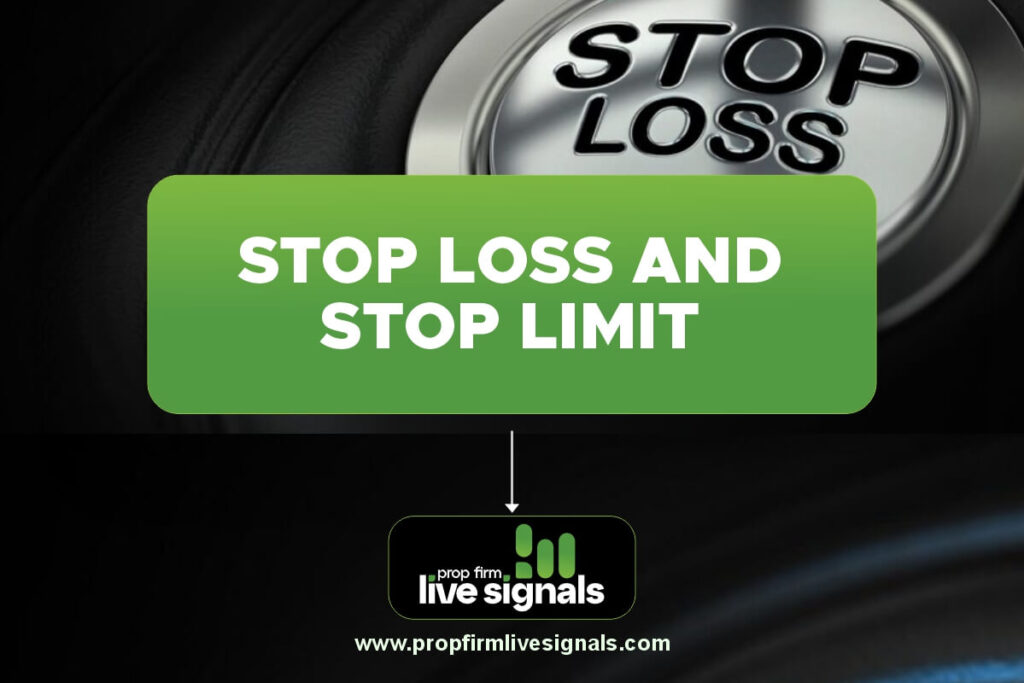What is a stop-loss order?
A Stop-Loss order is a type of pending order that a trader places to automatically buy or sell an asset when it reaches a specific price. A Stop-Loss order aims to limit losses by closing out a position when the security’s price falls below a certain threshold.
What is a Stop-Limit order?
A Stop-Limit order is a type of pending order that combines a Stop-Loss order with a limit order. Similar to a Stop-Loss order, a Stop-Limit order triggers the placement of an order when the security price reaches a specified level. However, instead of placing a market order, it places a limit. When using stop limit orders, traders should be aware that there’s a risk of the limit order not being filled if the market moves too quickly. This can happen if the price of the security gaps down below the limit price before the limit order is executed.
Types of Stop-Loss Orders
There are different types of stop-loss orders, they include
- Buy-Stop Loss: A Buy-Stop Loss order is a type of Stop Loss order used for a short position. It is set above the present price when it reaches a specified price level. The order will restrict the trader’s loss if the price rises and they incur a loss.
- Sell-Stop Loss: A Sell-Stop Loss order is set below the current price when a trader holds a long position, as it is designed to close the position if the price falls to a certain level. This is because if the asset price falls below the specified level, it indicates that the market is turning against the trader’s position and could continue to fall further, resulting in greater losses.
- Trailing Stop loss: A Trailing Stop Loss order automatically follows the market price as it moves in a favorable direction. This is different from a regular Stop Loss order, which remains fixed at a set price level. The trailing stop loss is not manually fixed, it is automatically adjusted by the platform.
Types of Stop-Limit Order
There are several types of stop-limit orders, they include;
- Buy Stop Limit order: Buy Stop Limit order allows traders to place a limit order at a specific price (lower) once the Ask price reaches the Stop level. This is beneficial for traders who want to buy an asset only if the price reaches or exceeds a specific level but do not want to pay too much for it.
- Sell Stop Limit order: A Sell Stop Limit order allows traders to place a limit order to sell a security once the Bid price reaches a specified level, ensuring they can exit their position at a predetermined price or better. Each time the Sell Limit is established below the Bid price but above the Stop level.
Why should I use a stop-loss and stop-limit
Using Stop-Loss and Stop-Limit orders can provide numerous benefits for traders, such as risk management, by setting Stop-Loss orders, traders can limit their losses if the market moves against their position. Stop-Loss and Stop-Limit orders can help traders maintain discipline as they are clear rules for when to enter and exit positions. Stop-Loss and Stop-Limit orders can help traders avoid emotional trading decisions by automating the process of exiting a position. By setting Stop-Loss and Stop-Limit orders in advance, traders can save time and focus their energy on market analysis or developing new strategies. Knowing that Stop-Loss and Stop-Limit orders are in place can help reduce trading stress, as traders can be confident that their positions are being managed.
How to set stop-loss and stop-limit on a trading platform?
Setting Stop-Loss and Stop-Limit orders can differ depending on the trading platform. Before placing a trade with a stop-loss, you must first analyze the market and determine the asset you wish to trade and the type of trade you will be opening. Once you have selected the asset you want to trade, the next step is to set the order specifications. In the Order window, you will see an option for execution type. You can choose either Instant Execution or Pending Order. After selecting the execution type, specify the price for your Stop-Loss. To set a stop limit, Just like opening an order with a Stop-Loss, you will start by analyzing the market and selecting the asset you want to trade. Then, instead of choosing Instant Execution in the Order window, you should select Pending Order. After selecting the Pending Order type in the MT4 Order window, you will see a Type field with a list of pending order types. Click on the Type field, there is a menu with several options, including Buy Stop Limit and Sell Stop Limit, choose the appropriate one for you. The order will be canceled if it fails to be executed by that date. If the market conditions have been altered, use the expiration date to prevent the order from being executed. Your order will now be placed if you click the Place button.
Frequently asked questions
Can I change my Stop Loss or Stop Limit levels after placing an order?
- Yes, you can typically adjust your Stop Loss and Stop Limit levels before they are triggered. However, you may incur additional fees or delays if the market is particularly volatile.
What happens if my Stop Limit order is not filled?
- If your Stop Limit order is not filled, it will remain open until executed or canceled.
Do I need to use both a Stop Loss and Stop Limit order for every trade?
- No, you do not need to use Stop Loss and Stop Limit orders for every trade.




